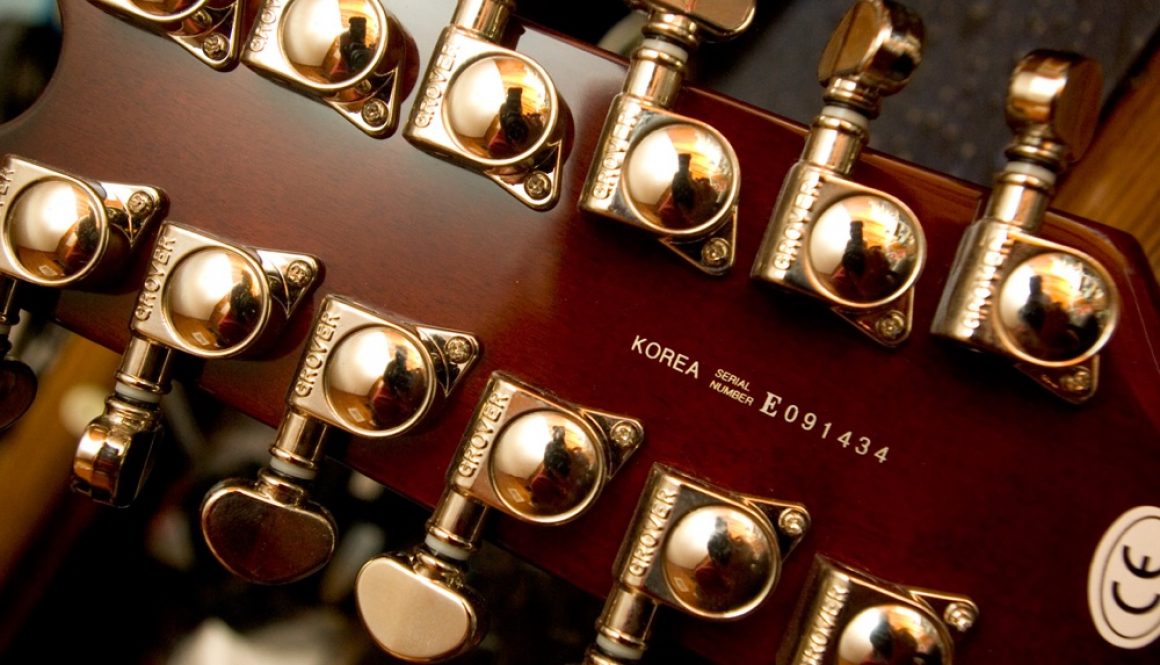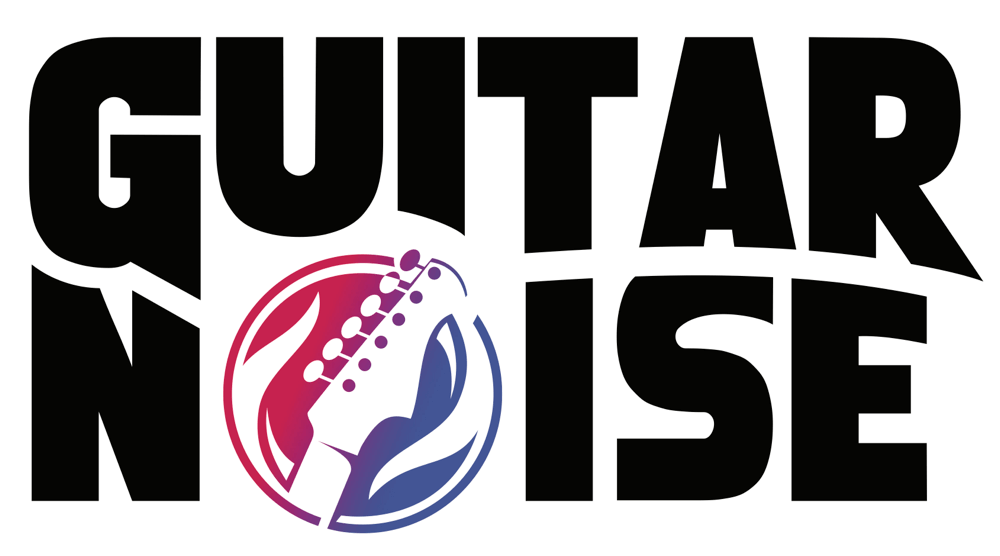How do I tune a 12 string guitar?

I know a lot of people like to number the strings of a twelve-string guitar from one (high E) to twelve, but I find it much easier to number them as a six-string guitar, that is one through six, adding the designation “a” or “b” to each string as well. “A” means closer to the floor (as viewed when I am sitting with the guitar) and “b” is closer to the ceiling. The main reason I do this will, hopefully, be readily apparent when I tell you that all the “a” strings are tuned just like those of a regular guitar in standard tuning. So if you ignore the “b” strings for the moment, you’ll see that the two guitars compare like this:
The first two sets of strings, the high E (1a and 1b) and the B strings (2aand 2b), are unison pairs. When struck, they sound the same note and this is the same note as on the first and second string of a normal guitar. So let’s add them to our chart:
And now the fun begins. The next four pairs of strings are tuned in octaves.This means that, although they are the same note in name – like the “do’s” in”do, re, mi, fa, sol, la, ti, do” – they will be two different notes. String”3a,” we already know is the same as the G string on regular guitar. String”3b” is tuned to the G note that its an octave higher. The simplest way to think about it, if you’re a linear person, is to think that it’s the note at the twelfth fret of the G string. But it’s just as easy to find these notes in first position.The G an octave higher than the open third string is at the third fret of the first string. Let’s go on and find the rest of the notes:
These six “b” strings give the twelve-string guitar its fullness of sound.Whenever you play a string, you are playing an additional note.
For a complete lesson on using a 12 string guitar see the article Double Your Pleasure – A Guide to the Twelve-String Guitar.




EJ
June 3rd, 2016 @ 4:22 pm
Came here to say thanks. Just got a wonderful deal on a 1995 Fender 12 with hardshell case. Been decades since I had one and your explination was an excellent refresher. This is yet another example of the power for good out here on the web. The 12 was a Craigslist ad in Tucson. I live many hours away and we simply trusted each other and it turned out great.
Lissa
May 20th, 2016 @ 1:43 pm
I tried tuning this way, and the strings broke when tuning the “b” strings an octave higher, because it was too tight. I was just using the strings that came with the guitar. I bought it from a pawn shop, but I think they are a 12-string guitar set of strings.
EJ
June 3rd, 2016 @ 4:18 pm
Lissa, old players trick…ALWAYS start by unwinding the string a few turns, then take it up to the correct pitch using a tuner or the classic way of fretting the string next to it. (IE: Depressing the E string closest to you when you hold it will give you the A note for the next string.) It is quite possible the strings were old and frail.
Lissa
June 10th, 2016 @ 6:16 pm
Thanks. The guitar has a weird bridge – there are no pins (by design – not loss). It’s designed more like the bridge of a ukulele, so I wonder if that’s a contributing factor.
EJ
June 3rd, 2016 @ 4:28 pm
Back in the day I tuned my Yamaha 12 to my lead guitar and we had no problem. I played it hard over a decade with no warping or lifting of the bridge. I think it is all about the quality of the ax. I use D’Addario light gauge.
Bill McMurray
September 29th, 2015 @ 10:07 am
I was once told that a 12-string guitar is tuned lower than a 6-string by one and a half (1-1/2) semi-tones. I assume that to play along with a 6-string player I would either place a Capo at the 3rd fret on my 12-string and play the same chords as the six-stringer OR ditch the Capo and learn the alternate keys/chords to be used when playing along with a with the 6-string player. Same reason – to prevent bowing of the neck of the 12-string. PLEASE, someone correct me if I’m wrong ’cause I was planning on taking my Takamine-12 to our weekly get-together this aft.
Chris Shelton
November 8th, 2016 @ 10:58 am
Not only is bridge separation and neck warping a possibility, but I had that very thing happen with my Martin D12-28. For years I had tuned it to std and one day “surprise”. The bridge had separated and neck warped. I got it repaired, but now I tune one tone lower.
Dennis
August 6th, 2015 @ 12:36 pm
Hi,
Very nice explanation. However, I don’t know if anyone else has said this, but, when you tune a twelve string guitar, you actually tune it one step down. Meaning, the E is actually a D, the A is a G, the D is a C, the B is an A and the high E is a High D. The reason you do this is because of the high tension on the neck and belly of the guitar, due to the extra six strings. If you don’t tune this way, you have a high probability of pulling the bridge up off the belly of the guitar. Do yourself a favor, tune it down one step, and then use a capo to play with all your six string playing buddies.
Bill Summers
December 18th, 2016 @ 6:07 pm
There is no rule saying you have to do that (tune the guitar down one step). Also, there has never been any conclusive proof that tuning down one step relieves tension on the bridge, braces and body of the guitar to any significant degree as to prolong the life of the guitar. As long as you don’t tune higher than A 440 (the octave string on your A string pair), you shouldn’t have too much of a problem.
Dave
April 24th, 2015 @ 12:53 am
Ditto. Thank you sir.
Phil Kennelty
April 13th, 2016 @ 2:33 pm
Rickenbacker Electric 12-strings were traditionally strung that way (octave string on the inside). It mutes the effect of the octave strings when strumming down or picking with the thumb and emphasizes them on the up stroke or when finger picked. That’s how Roger McGuinn got his signature sound with The Byrds. Personally, I prefer being able to glance the octave string when strumming down.
John Taylor
April 3rd, 2015 @ 2:58 pm
I understand the tuning of the twelve string but am wondering if it is possible, or rather, worth reversing the octave strings on the E, A, D, and G so that the main string is in the upper position and the octave is in the lower. Sometimes having the octaves first seem too bright when down strummed. I know it’s physically possible but I don’t want to waste a set of (not cheap) strings to find out it was a bad idea. Thanks…
Ed Bush
March 20th, 2015 @ 8:55 pm
I like playing all different kinds of instruments. Started out Ii 5th grade band with a clarinet . At age 12 started messing around with a Sears Sliver tone 6 string guitar. Then sax and on and on. I like music! 12 string have always interest me so I pick one up. And I am very / don’t have any idea what I am doing!!!. Thanks a lot for this help. Now I have a starting point. Thanks again. Ed
Krea
February 16th, 2015 @ 9:38 am
Thanks for helping a dummy understand. Even makes tuning down a step easier. Thanks again
Chudderhead
January 21st, 2015 @ 8:43 pm
I FINALLY understand how to do it after reading your efforts. You may possibly have a talent there – Knowing how to “get thru” to “People” is valuable asset to have. Again, I get it now. Thank You.
steve h
August 9th, 2014 @ 4:29 am
Hi there, great info, thanks.
I have had a Sigma 12 string (well 11 string actually) and has been in a case for quite a few years and not played. I thought I would dig it out and change the strings. I purchased some decent Martin strings and have put them on and tuned up. All seems good….until I play a chord, basically the thinner string for example the top (higher) ‘A’ string becomes too high in pitch. The previous strings were fine, maybe I shouldn’t have changed them after all and just replaced the missing G string. Any ideas? Many thanks in advance. Steve
Rick
December 5th, 2014 @ 10:44 am
Did you purchase a set of 12-string guitar strings? I’m not completely sure using two 6-string sets would make a difference to the tuning. But it definitely makes a difference to the tension when playing. Just a thought.
jax jaxon
March 8th, 2014 @ 2:38 pm
one of the best explanations on tuning and alternate tunings i have found. Helps me to understand the complexities of the guitar more than many other instrument. Thx for the infomation.
David Paul Robson
January 16th, 2014 @ 12:15 pm
Thanks for the effort, excellent explanations and advice, just got my first 12 string.. 14/1/14
Paul Hingtgen
March 10th, 2013 @ 8:01 am
Excellent way to present how to tune. I have been avoiding a 12 string because everyone hates to tune them. Was in a high end guitar store yesterday and they advised to just tune it like a normal guitar. Thanks from Milwaukee
Kerry Corker
December 3rd, 2012 @ 5:35 pm
Very well described. putting it in chart form is the best way for a beginner to understand. thanks for that. cheers kerry